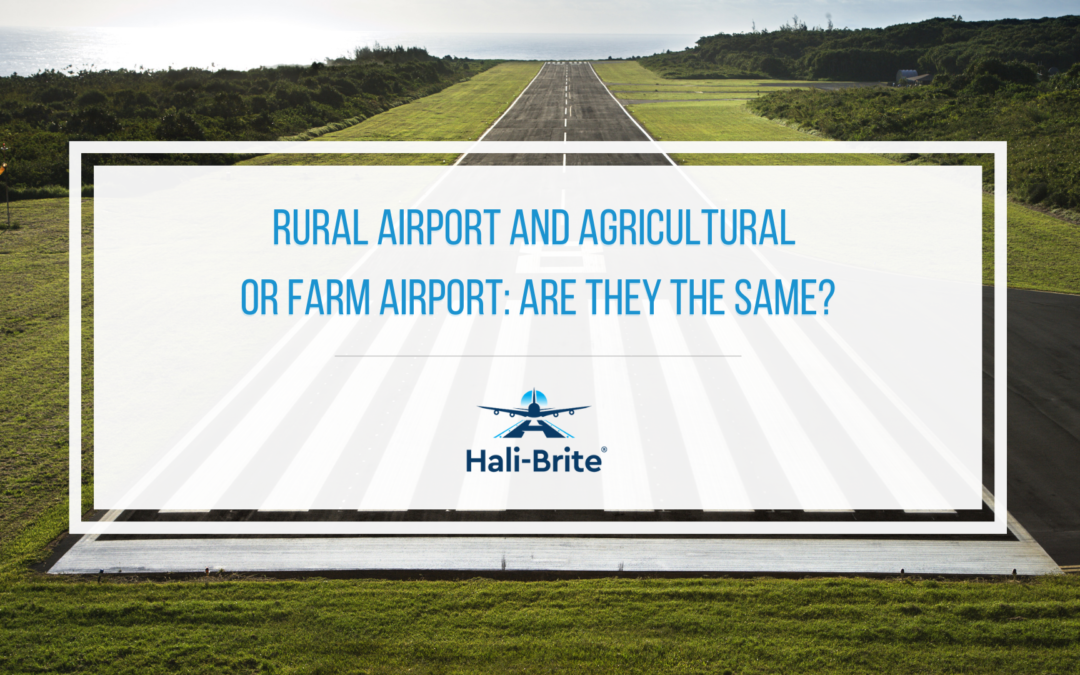Agricultural or farm airports aren’t necessarily the same as rural airports. An agricultural airport grows crops, raises animals, and performs other farming activities on part of its land. Meanwhile, rural airports are small regional hubs located in remote communities. Despite these differences, both types of airports have key similarities. For one, the Federal Aviation Administration (FAA) regulates them both as long as they are for public and commercial use. Additionally, they both need good facilities and systems, especially a cost-saving and efficient lighting system.
In this article, we’ll compare rural and agricultural airports, their benefits and requirements, and their need for advanced lighting solutions.
- What Is a Rural Airport?
- What is an Agricultural or Farm Airport?
- Differences Between Rural and Agricultural/Farm Airports
- Future of Rural and Agricultural/Farm Airports
What Is a Rural Airport?
You may be asking, “What is a rural airport?” A rural airport is typically located in remote communities and serves fewer than 100,000 commercial passengers per year, as measured by the two prior years. It also has to include at least one of the following requirements:
-
- Not within 75 miles of another airport with 100,000 or more commercial passengers in the previous year
- Receiving air service subsidies
- Not connected by paved roads to any other airport
Benefits of a Rural Airport
Rural airports are essential drivers of regional economic development and growth. They benefit local communities in many ways, including the following:
-
- Access point to remote communities
- Connect flights and other travels
- Contribute to economic activity and assist local businesses in expanding into new markets
- Improve the quality of life by bringing in outside resources (information, products, and people)

What is an Agricultural or Farm Airport?
An agricultural airport refers to an airport with some of its land used for farming or agriculture. Converting some of the airport’s land for agricultural use serves both the airport operators and the community. Here are some of the benefits:
-
- Generates revenue
- Saves on airport maintenance costs
- Improves the airport’s overall appearance
- Helps and supports farmers
- Protects the environment and promotes “green initiatives”
- Often leads to affordable produce
While there are many public agricultural airports, there are also private farm airports, such as the Hilltop Airport, owned by some Ohio farmers.
Differences Between Rural and Agricultural/Farm Airports
Several distinctions make rural and agricultural airports different. Here are a few of them:
Location and Purpose
| Location | Purpose | |
| Rural Airport | Mountainous, rural, or remote areas with limited access and far from other airports | Serve as an access point for the remote areas |
| Agricultural Airport | It could be anywhere with large, open spaces that can be turned into farmland | Aside from general aviation service, it serves operators and the community through farming and agriculture |
Funding and Support
The FAA funds public rural and agricultural airports included in the National Plan of Integrated Airport Systems (NPIAS), excluding private farm airports. The FAA has several initiatives and programs that support rural airports. Here are some of them:
-
- Airport Improvement Program (AIP) – airport planning and development related to capacity, security, environmental concerns, etc.
- Bipartisan Infrastructure Law (BIL) – helps modernize infrastructure and improve the efficiency and safety of rural airports
-
- Small Community Air Service Development Program (SCASDP) – a grant awarded to small communities to improve their air transport services
Meanwhile, public agricultural airports can also receive AIP funding and FAA assistance. Aside from federal funding, they also receive support from:
-
- State and local government
- Private donors
- Environmental organizations aiming to promote “green” initiatives
Size and Operations
The FAA categorizes airports based on their commercial service and annual enplanements. Airport size also depends on operations, community population, and other factors.
Rural airports, such as the Adak Airport in Alaska, are typically smaller and account for only 0.05% to 0.25% of the annual U.S. commercial enplanements. Meanwhile, agricultural airports vary in size. There are big farm airports in metropolises, such as the Denver International Airport, which uses solar farms to grow sunflowers and other crops.
Regulatory Requirements
Rural or agricultural airports must follow many government regulations. Among those are:
-
- Airport certification
- Airport safety, standard, and design requirements
- Environmental requirements, such as air, waste, and water management
- Noise and access restrictions
- Management of wildlife hazards
Meanwhile, agricultural airports, whether big or small, need additional requirements, such as:
-
- “Hazardous Wildlife Attractants on or near Airports,” which addresses potential wildlife hazards and the height restrictions of crops
- Crops compatibility with the aircraft safety requirements
- Land use compatibility
- Perimeter fencing requirements, which include the distance of farms from runways, airstrips, etc
Future of Rural and Agricultural/Farm Airports
In far-flung Alaska, northern airports are often in constant darkness during the winter. But the future is bright, as there are now more advanced and energy-efficient aviation lighting systems ideal for remote areas. Rural airports can benefit significantly from energy-efficient LED lighting systems, such as remote airfield lighting systems, standalone solar-powered LED lights, and more.
Additionally, an innovative airport LED lighting system can meet a farm airport’s aviation and agriculture needs. It can light up the airstrips and airfields, grow vertical farms, guide crop dusters, and more.
Lighting systems are more than fixtures; they are drivers of change. We at Hali-Brite can help you move towards change with our state-of-the-art aviation lighting solutions. We can provide cost-effective, high-quality, FAA-approved lighting systems and equipment suitable for your needs. Contact us at (218) 454-0956 or here for a free quotation.

